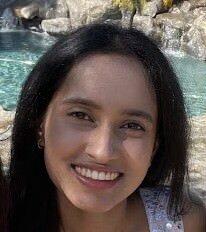Imagine that your family has just moved to foreign country and you’ve been enrolled in school there. Every day you struggle to try to learn literature and history in classes taught exclusively in an alien language. Now imagine the situation reversed and you have an average day in the life of a foreign student at SHS. In addition to the normal challenges of high school, these students have to deal with being thrust into a new culture, bombarded with a new language and surrounded by a completely unfamiliar environment.
At the same time, teachers find helping these students requires no small effort. Within the same classroom, teachers have to accommodate the needs of native English learners while adjusting their curriculum to better suit these newcomers. Despite this challenge, many teachers, such as English teacher Catherine Head are working to help English language learners succeed in the classroom.
“We are committed to teaching kids, taking advantages of their greatest strengths and helping them with whatever obstacles they have to their learning,” said Head, who teaches both English 9 as well as AP Literature.
English teachers use a number of strategies for helping students who are still learning English. Head said teachers look at facial expression and body language to gauge understanding and ask questions to ascertain whether the students are comprehending the material.
According to Head, almost all teachers have received a Cross-cultural Language and Academic Development (CLAD) certification after completing a series of courses known as the California Teacher of English Learners (CTEL) two years ago. This effort arose because the district was out of compliance with state laws for the instruction of English-learning students.
Head said teachers have be of aware of certain factors when teaching these students.
“It’s not just a matter of learning vocabulary and how to conjugate verbs,” said Head. “It’s all linked with culture, because language comes from culture and language forms culture.”
She said the main tool English teachers use for English-learning students is differentiated instruction: in other words, tailoring assignments accordingly to match each student’s current capability.
Head cites the freshman setting description as an example of such a tailored assignment. In her class, an English learner student typically complete only the number of words required for the piece whereas a proficient English student is expected to avoid using linking verbs and try to incorporate concrete nouns in the writing as well.
“The heart of differentiated instruction is to start where each individual student is, and build from there,” said Head.
Unfortunately, the budget problems facing the district have only increased the burden for teachers trying to cope with different ability levels in the classroom.
“We’re all committed to reaching our students as individuals,” said Head. “But it is much harder when you have 35 in the room than when you have 25.”
Teachers in the history department say they are using similar techniques as those of the English department when targeting English-learning students in the classroom.
“For the most part, foreign students try very, very hard to get their work done and I try to work hard for them in return,” said Margarita Morelle, who teaches US History and AP US History.
Morelle said she tries to check in frequently with her foreign students to see how they are progressing, conversing with them at the beginning of school to measure their English proficiency, and adjusting assignments to suit each individual student.
Although they may struggle initially in English and history, the one area that foreign students, in general, seem to excel in is math.
“Math is more of a universal language, across different nations and different languages,” said math teacher Audrey Warmuth. “The symbolism used, and things like graphing are pretty much standard worldwide.”
Learning in a foreign language is without a doubt, a Herculean effort. But when these students step on to the SHS campus, they are finding teachers who understand their needs and use proven methods to help them succeed.


























